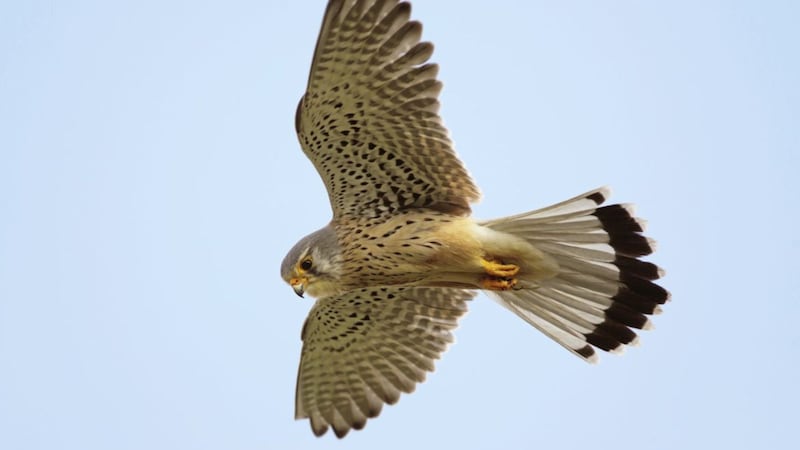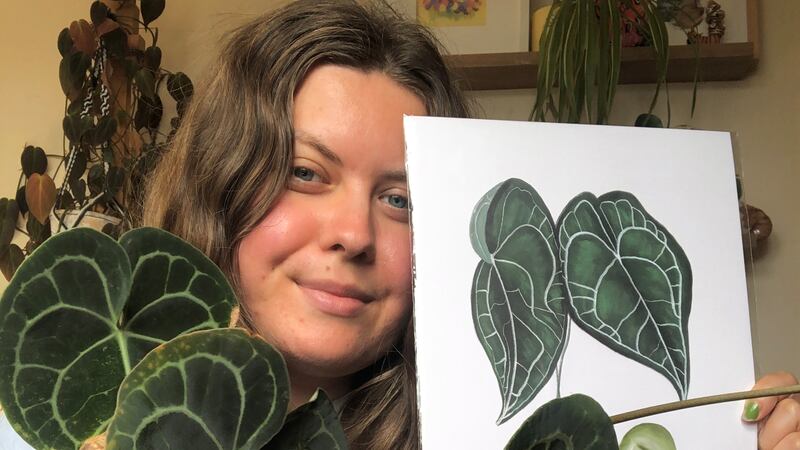THE windhover is an old name for one of Ireland’s smallest and most widespread falcons, the kestrel, Falco tinnunculus. Falco is believed to derive from the Latin falx meaning a ‘sickle’, referencing the claws of the bird, with tinnunculus meaning ‘little bell ringer’, a reference to its call. Similarly, its English name, thought to have its origin in the French word ‘crécelle’, meaning ‘to rattle’, is another nod to the bird's call.
The kestrel has long been admired for its skill as a hunter and for its mastery of flight, especially in windy conditions where it can hang motionless in the sky, ‘kiting’ without a wing beat, its only movement the spread and contraction of the tail feathers to preserve balance.
Poet Ted Hughes described the kestrel as a kind of supernatural ‘hallucination’, due to this eerie ability to hover in one spot ‘in the streaming air’. The late Robert Dougall, former newsreader and announcer with the BBC and also a keen ornithologist, wrote in his book A Celebration of Birds (1978): "I am convinced that kestrels in rough weather will sometimes fly for the sheer joy of it."
Its Irish names, pocaire gaoithe meaning wind frolicker, and púicín gaoithe, meaning wind pooka (ghost), also reflect this aerial prowess.
It was the effortless floating on the breeze by a male kestrel, which caught my eye recently. Hovering above a roadside verge, it was on the lookout for prey, probably a field mouse or shrew. Prey detection is aided by the bird’s ability to see in ultraviolet light, enabling it to view urine trails left by small rodents moving through vegetation. Kestrels will also catch insects and other invertebrates.
Often seen hovering above new roads and motorways with wide uncut verges, Kestrels are resident all year in Ireland and are found in a wide variety of open habitats including farmland, moorland, coasts and have even ventured into our towns and cities.
They nest in trees, buildings or cliff ledges and will also take to artificial nest boxes. The adult male has a grey head and unbarred grey tail while in contrast, the females have a brown streaked head and finely barred tail. The reddish-brown coloured back of both birds is much richer in the male and their upper wings are marked with diamond-shaped spots. A distinctive facial moustache is also noticeable on both.
As I watched the male kestrel poised, playing with the wind, occasionally pumping its wings, I hoped the bird might tumble and stoop towards some unsuspecting prey, but it opted instead to drop in height and bank before gliding away beyond the hill.
When they do lock on to a victim, Kestrels will go into a headlong dive before coming to a halt close to the ground with claws splayed forward ready to clasp the hapless prey. Because of its hooked beak, like many other birds of prey, the Kestrel has suffered from persecution in past centuries but fortunately it has continued to thrive in recent times and is now one of our most common raptors.??Having just stepped into December, on the cusp of celebrating Christ’s birthday, perhaps it’s worth recalling the words of Gerard Manley Hopkins from his poem The Windhover, written in 1877 with the subtitle To Christ our Lord. He writes of seeing the "dapple-dawn-drawn Falcon" one morning and how the kestrel’s flight "Rebuffed the big wind".
As the subtitle suggests, the poem is a thanksgiving to Christ, and fascinated by "the mastery of the thing’", the poet urges us to show gratitude to God for our beautiful world of nature.








